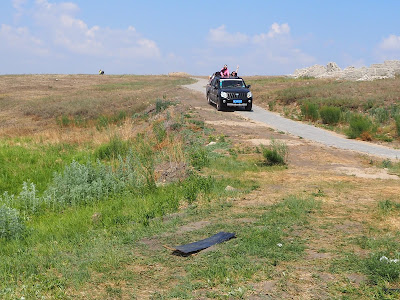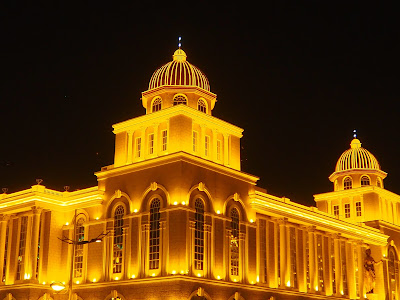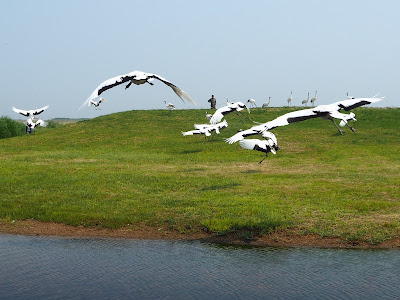We hadn’t actually planned to take another tour to China this year. One major deterrent was the near inevitability of being taken to so-called “slaughterhouses” - shopping outlets disguised as tourist stops, where group tour participants are subjected to relentless and often manipulative sales tactics. The goal, of course, is to pressure tourists into parting with their money. The mere thought of enduring these unpleasant experiences again was enough to extinguish any enthusiasm for signing up for another China tour.
But when the idea of visiting Inner Mongolia was brought up, something stirred. The prospect of exploring the exotic and enchanting Mongolian grasslands rekindled our interest. For someone like me, who grew up humming the nostalgic tune “Night on the Prairie,” the romantic allure of the open steppe was simply too irresistible. And so, we decided to give China one more chance.
The tour began with a red-eye flight on Air China, departing Singapore for Beijing at 00:15 on 25 June 2017 - not exactly the most appealing time to start a journey. The flight to Beijing took just over 5.5 hours, followed by another 2-hour domestic flight to Harbin. After a short lunch break, we boarded a high-speed train at Harbin Railway Station, bound for Qiqihar.
Boarding the train was pure chaos. As soon as the gates opened, passengers surged forward in long, jostling lines. Within moments, we lost sight of our tour group in the crush of bodies. Disoriented and unsure of where to go, we turned to the railway staff for help - but to no avail. Fortunately, a few kind strangers came to our rescue and pointed us in the right direction. We made it to the platform with just 30 seconds to spare before the train arrived. I shudder to think what would have happened if we’d missed it.
Despite the shaky start, the journey offered one unexpected benefit: it taught us more about the geography of northern and northwestern China. For years, I’d often confused Inner Mongolia with the country of Mongolia - and I suspect I’m not alone. Inner Mongolia is, in fact, an autonomous region within China, whereas Mongolia is a separate nation that lies to the northwest. The northern frontier of Inner Mongolia even shares a border with Russia, adding to the region’s unique geopolitical and cultural character.
The highlight of our tour was supposed to be the famed Mongolian Grassland in Hulunbuir - a sweeping, romantic landscape that had long captured our imagination. However, what we encountered fell far short of expectations. Far from the vast, untamed prairie depicted in the promotional material, we were brought instead to a manufactured settlement conveniently located just off the highway, clearly designed to cater to passing tourists.
A handful of yurts had been erected within a fenced compound, but the one we were shown wasn’t even a traditional dwelling - it had been repurposed as a small canteen for serving tourists. Inside, it was completely bare except for a few tables and stools, lacking any cultural or historical ambiance. Outside, several horses were tethered for tourist rides, and a go-kart ring had been set up in the open field, presumably to satisfy thrill-seekers. The entire setup felt more like a mini adventure park than the authentic Mongolian grassland experience we had envisioned.
Naturally, most members of our tour group were disappointed. Many of us had hoped to witness a genuine Mongolian pastoral scene - herds of sheep and horses grazing freely, yurts dotting the open plains, and nomadic families living in harmony with nature. Instead, we were left wondering whether this letdown was the doing of the Malaysian tour company or their Chinese counterparts. Somewhere along the line, something had clearly been lost in translation - or sacrificed for convenience.
Still, I tried to remain positive. If nothing else, I let my imagination fill in the gaps, painting in the rolling plains and wandering herds that we didn’t get to see. Sometimes, the mind can conjure what reality fails to deliver.
 |
| Mongolian costume offered to tourists for photo taking. |
**************************************************
In the end, it was the scenic drive - winding alongside vast expanses of open grassland and an endless panorama of rolling green hills - that helped redeem the underwhelming experience at the so-called Mongolian Grassland. The breathtaking natural beauty of the landscape, untouched and limitless, offered a quiet consolation and reminded us of the wild, untamed charm we had hoped to find.























































